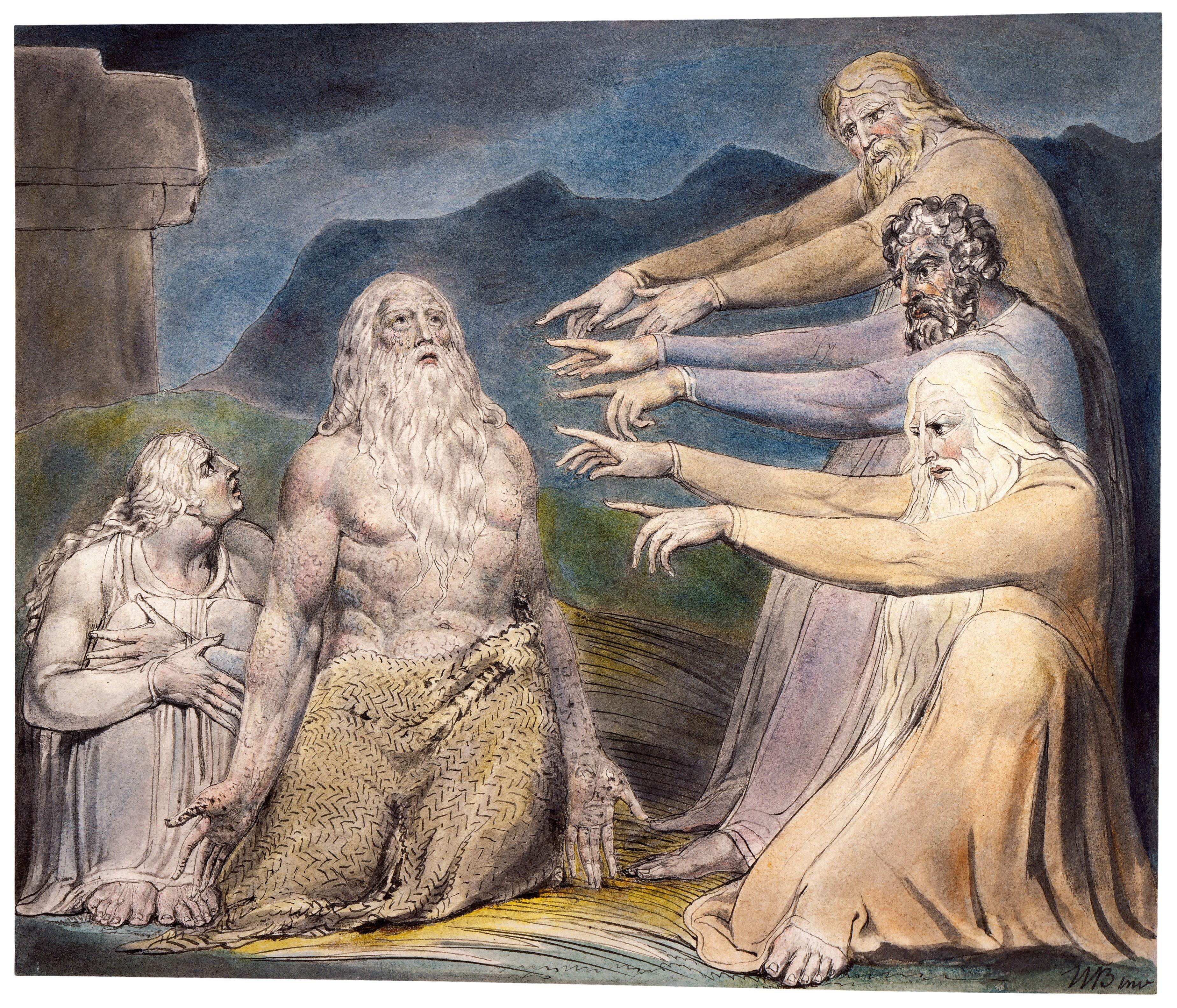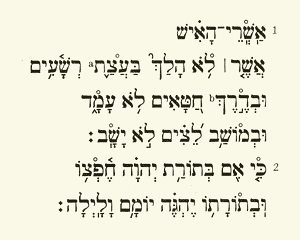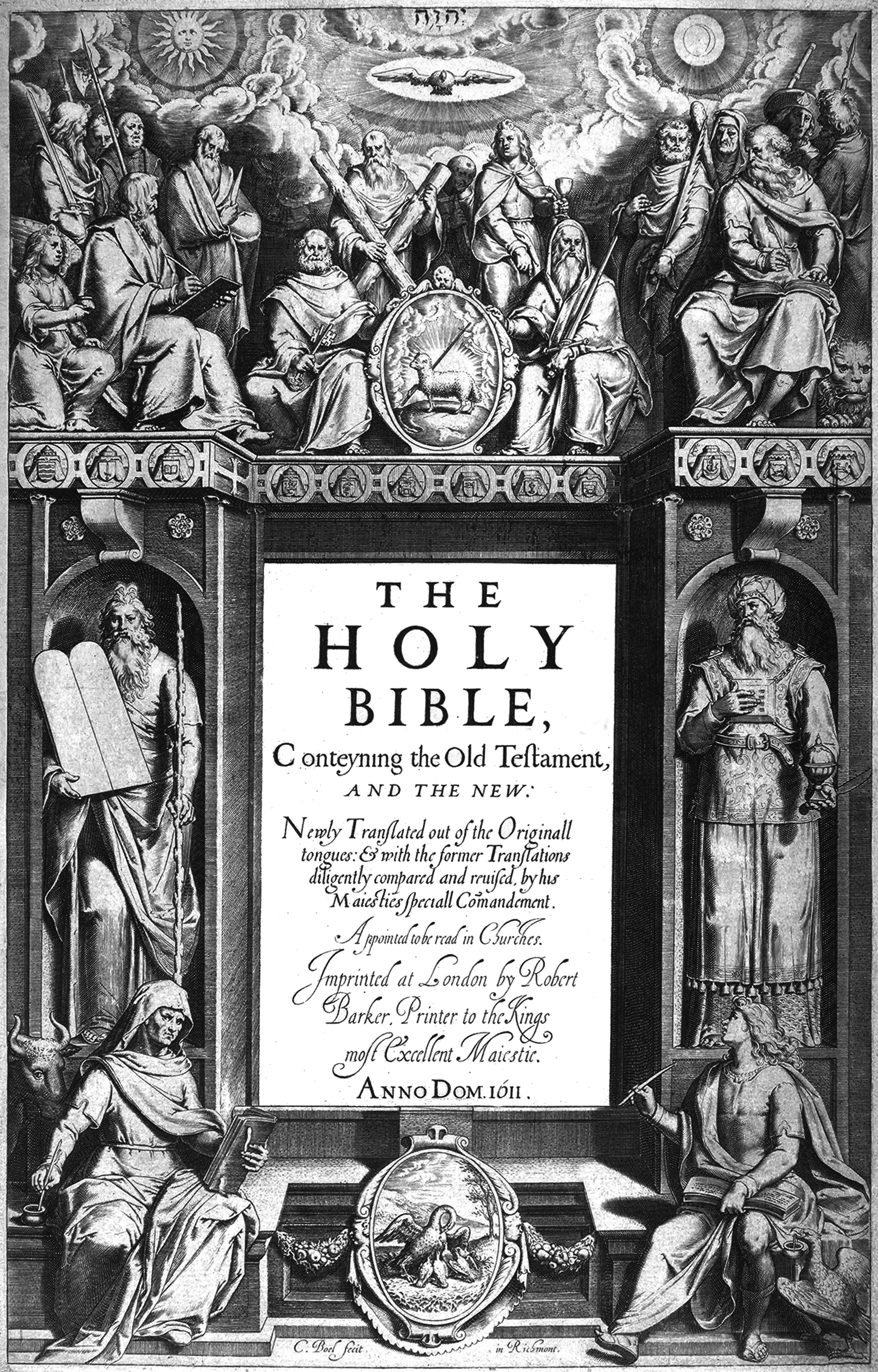|
Job 21
Job 21 is the 21st chapter of the Book of Job in the Hebrew Bible or the Old Testament of the Christian Bible.Holman Illustrated Bible Handbook. Holman Bible Publishers, Nashville, Tennessee. 2012. The book is anonymous; most scholars believe it was written around 6th century BCE. This chapter records the speech of Job, which belongs to the Dialogue section of the book, comprising Job 3:1– 31:40. Text The original text is written in Hebrew language. This chapter is divided into 34 verses. Textual witnesses Some early manuscripts containing the text of this chapter in Hebrew are of the Masoretic Text, which includes the Aleppo Codex (10th century), and Codex Leningradensis (1008). There is also a translation into Koine Greek known as the Septuagint, made in the last few centuries BC; some extant ancient manuscripts of this version include Codex Vaticanus (B; \mathfrakB; 4th century), Codex Sinaiticus (S; BHK: \mathfrakS; 4th century), and Codex Alexandrinus (A; \mathfra ... [...More Info...] [...Related Items...] OR: [Wikipedia] [Google] [Baidu] |
Book Of Job
The Book of Job (; hbo, אִיּוֹב, ʾIyyōḇ), or simply Job, is a book found in the Ketuvim ("Writings") section of the Hebrew Bible (Tanakh), and is the first of the Poetic Books in the Old Testament of the Christian Bible. Scholars are generally agreed that it was written between the 7th and 4th centuries BCE. It addresses theodicy, why God permits evil in the world, through the experiences of the eponymous protagonist. Job is a wealthy and God-fearing man with a comfortable life and a large family; God, having asked Satan ( hbo, הַשָּׂטָן, haśśāṭān, , label=none) for his opinion of Job's piety, decides to take away Job's wealth, family and material comforts, following Satan's accusation that if Job were rendered penniless and without his family, he would turn away from God. Structure The Book of Job consists of a prose prologue and epilogue narrative framing poetic dialogues and monologues. It is common to view the narrative frame as the original cor ... [...More Info...] [...Related Items...] OR: [Wikipedia] [Google] [Baidu] |
Codex Alexandrinus
The Codex Alexandrinus (London, British Library, Royal MS 1. D. V-VIII), designated by the siglum A or 02 (in the Gregory-Aland numbering of New Testament manuscripts), δ 4 (in the von Soden numbering of New Testament manuscripts), is a manuscript of the Greek Bible,The Greek Bible in this context refers to the Bible used by Greek-speaking Christians who lived in Egypt and elsewhere during the early history of Christianity. This Bible contained both the Old and New Testaments in Koine Greek. written on parchment. Using the study of comparative writing styles (palaeography), it has been dated to the fifth century. It contains the majority of the Greek Old Testament and the Greek New Testament. It is one of the four Great uncial codices (these being manuscripts which originally contained the whole of both the Old and New Testaments). Along with Codex Sinaiticus and Vaticanus, it is one of the earliest and most complete manuscripts of the Bible. It derives its name from ... [...More Info...] [...Related Items...] OR: [Wikipedia] [Google] [Baidu] |
Job 20
Job 20 is the twentieth chapter of the Book of Job in the Hebrew Bible or the Old Testament of the Christian Bible.Holman Illustrated Bible Handbook. Holman Bible Publishers, Nashville, Tennessee. 2012. The book is anonymous; most scholars believe it was written around 6th century BCE. This chapter records the speech of Zophar the Naamathite (one of Job's friends), which belongs to the Dialogue section of the book, comprising Job 3:1– 31:40. Text The original text is written in Hebrew language. This chapter is divided into 29 verses. Textual witnesses Some early manuscripts containing the text of this chapter in Hebrew are of the Masoretic Text, which includes the Aleppo Codex (10th century), and Codex Leningradensis (1008). There is also a translation into Koine Greek known as the Septuagint, made in the last few centuries BC; some extant ancient manuscripts of this version include Codex Vaticanus (B; \mathfrakB; 4th century), Codex Sinaiticus (S; BHK: \mathfrakS; 4th ... [...More Info...] [...Related Items...] OR: [Wikipedia] [Google] [Baidu] |
Timbrel
The timbrel or tabret (also known as the tof of the ancient Hebrews, the deff of Islam, the adufe of the Moors of Spain) was the principal percussion instrument of the ancient Israelites. It resembled either a frame drum or a modern tambourine. History The word timbrel is used in the Hebrew Bible in both singular and plural form, so as to suggest the former referred to a hoop of wood or metal over which was stretched a parchment head; while the latter was perhaps used to designate the tambourine with bells or jangles fixed at intervals in hoops. A tambourine is essentially a wooden frame drum with jangles or bells round the edges. In , where the word "tabering" occurs in the King James Version, it means beating on the breast, as drummers beat on the tabret. The Israelites learned to use the timbrel during their sojourn in Egypt, and in the ''Encyclopædia Britannica'' Eleventh Edition, Kathleen Schlesinger stated "it has been suggested that as the Egyptians used it to scare a ... [...More Info...] [...Related Items...] OR: [Wikipedia] [Google] [Baidu] |
Righteousness
Righteousness is the quality or state of being morally correct and justifiable. It can be considered synonymous with "rightness" or being "upright". It can be found in Indian religions and Abrahamic traditions, among other religions, as a theological concept. For example, from various perspectives in Hinduism, Buddhism, Islam, Christianity, and Judaism it is considered an attribute that implies that a person's actions are justified, and can have the connotation that the person has been "judged" or "reckoned" as leading a life that is pleasing to God. William Tyndale ( Bible translator into English in 1526) remodelled the word after an earlier word ''rihtwis'', which would have yielded modern English *''rightwise'' or *''rightways''. He used it to translate the Hebrew root צדק '' tzedek'', which appears over five hundred times in the Hebrew Bible, and the Greek word (''dikaios''), which appears more than two hundred times in the New Testament. Etymologically, it comes from ... [...More Info...] [...Related Items...] OR: [Wikipedia] [Google] [Baidu] |
Last Judgment
The Last Judgment, Final Judgment, Day of Reckoning, Day of Judgment, Judgment Day, Doomsday, Day of Resurrection or The Day of the Lord (; ar, یوم القيامة, translit=Yawm al-Qiyāmah or ar, یوم الدین, translit=Yawm ad-Dīn, label=none) is part of the Abrahamic religions and the '' Frashokereti'' of Zoroastrianism. Christianity considers the Second Coming of Jesus Christ to entail the final judgment by God of all people who have ever lived, resulting in the approval of some and the penalizing of others. The concept is found in all the canonical gospels, particularly in the Gospel of Matthew. The Christian tradition is also followed by Islam, where it is mentioned in the 43rd chapter ('' Az-Zukhruf'') of the Quran, according to some interpretations. Christian futurists believe it will follow the resurrection of the dead and the Second Coming of Jesus, while full preterists believe it has already occurred. The Last Judgment has inspired numerous artistic ... [...More Info...] [...Related Items...] OR: [Wikipedia] [Google] [Baidu] |
Harp
The harp is a stringed musical instrument that has a number of individual string (music), strings running at an angle to its sound board (music), soundboard; the strings are plucked with the fingers. Harps can be made and played in various ways, standing or sitting, and in orchestras or concerts. Its most common form is triangular in shape and made of wood. Some have multiple rows of strings and pedal attachments. Ancient depictions of harps were recorded in Current-day Iraq (Mesopotamia), Iran (Iran, Persia), and Egypt, and later in India and China. By medieval times harps had spread across Europe. Harps were found across the Americas where it was a popular Folk music, folk tradition in some areas. Distinct designs also emerged from the African continent. Harps have symbolic political traditions and are often used in logos, including in Ireland. History Harps have been known since antiquity in Asia, Africa, and Europe, dating back at least as early as 3000 BCE. The ... [...More Info...] [...Related Items...] OR: [Wikipedia] [Google] [Baidu] |
Divine Providence
In theology, Divine Providence, or simply Providence, is God's intervention in the Universe. The term ''Divine Providence'' (usually capitalized) is also used as a title of God. A distinction is usually made between "general providence", which refers to God's continuous upholding of the existence and natural order of the Universe, and "special providence", which refers to God's extraordinary intervention in the life of people. Miracles generally fall in the latter category. Etymology "Divine" evolved in the late 14th century to mean "pertaining to, in the nature of or proceeding from God or a god". This came from the Old French ''devin'' or ''devin'', with a similar meaning, and that from the Latin ''divinus'', meaning "of a god", in turn from ''divus'', with similar meaning, which was related the Latin ''deus'', meaning god or deity. The word providence comes from Latin ''providentia'' meaning foresight or prudence, and that in turn from ''pro-'', ahead" and ''videre'', to ... [...More Info...] [...Related Items...] OR: [Wikipedia] [Google] [Baidu] |
Cattle
Cattle (''Bos taurus'') are large, domesticated, cloven-hooved, herbivores. They are a prominent modern member of the subfamily Bovinae and the most widespread species of the genus '' Bos''. Adult females are referred to as cows and adult males are referred to as bulls. Cattle are commonly raised as livestock for meat (beef or veal, see beef cattle), for milk (see dairy cattle), and for hides, which are used to make leather. They are used as riding animals and draft animals ( oxen or bullocks, which pull carts, plows and other implements). Another product of cattle is their dung, which can be used to create manure or fuel. In some regions, such as parts of India, cattle have significant religious significance. Cattle, mostly small breeds such as the Miniature Zebu, are also kept as pets. Different types of cattle are common to different geographic areas. Taurine cattle are found primarily in Europe and temperate areas of Asia, the Americas, and Australia. Zeb ... [...More Info...] [...Related Items...] OR: [Wikipedia] [Google] [Baidu] |
Modern English Version
The Modern English Version (MEV) is an English translation of the Bible begun in 2005 and completed in 2014. The work was edited by James F. Linzey, and is an update of the King James Version (KJV), re-translated from the Masoretic Text and the '' Textus Receptus.'' The ecumenical Committee on Bible Translation is composed of 47 American and English scholars from the three major branches of Christianity: Orthodox, Protestant, and Roman Catholic. History In June 2005, Southern Baptist minister, chief editor, and executive director Rev. James F. Linzey assembled and directed the Committee on Bible Translation, which included Stanley M. Horton serving as the senior editorial advisor. The Committee produced an updated edition of the KJV called the MEV, which is the KJV in a more modern English vernacular. The translators began the work on June 2, 2005; they completed the New Testament on October 25, 2011, and the Old Testament on May 28, 2014."Preface," ''MEV Thinline Referenc ... [...More Info...] [...Related Items...] OR: [Wikipedia] [Google] [Baidu] |
Psalm 1
Psalm 1 is the first psalm of the Book of Psalms, beginning in the English King James Version: "Blessed is the man", and forming "an appropriate prologue" to the whole collection.Kirkpatrick, A. F. (1906)Cambridge Bible for Schools and Collegeson Psalm 1, accessed 11 September 2021 The Book of Psalms is part of the third section of the Hebrew Bible, and a book of the Christian Old Testament. In Latin, this psalm is known as Beatus vir or ''Beatus vir, qui non abiit''.Church of EnglandBook of Common Prayer: The Psalteras printed by John Baskerville in 1762 The psalm is a regular part of Jewish, Catholic, Lutheran, Anglican, and other Protestant liturgies. Text Hebrew Bible version Following is the Hebrew text of Psalm 1: King James Version # Blessed is the man that walketh not in the counsel of the ungodly, nor standeth in the way of sinners, nor sitteth in the seat of the scornful. # But his delight is in the law of the ; and in his law doth he meditate day and night ... [...More Info...] [...Related Items...] OR: [Wikipedia] [Google] [Baidu] |
King James Version
The King James Version (KJV), also the King James Bible (KJB) and the Authorized Version, is an English translation of the Christian Bible for the Church of England, which was commissioned in 1604 and published in 1611, by sponsorship of King James VI and I. The 80 books of the King James Version include 39 books of the Old Testament, an intertestamental section containing 14 books of what Protestants consider the Apocrypha, and the 27 books of the New Testament. Noted for its "majesty of style", the King James Version has been described as one of the most important books in English culture and a driving force in the shaping of the English-speaking world. The KJV was first printed by John Norton and Robert Barker, who both held the post of the King's Printer, and was the third translation into English language approved by the English Church authorities: The first had been the Great Bible, commissioned in the reign of King Henry VIII (1535), and the second had been th ... [...More Info...] [...Related Items...] OR: [Wikipedia] [Google] [Baidu] |
.jpg)




